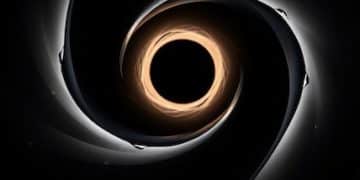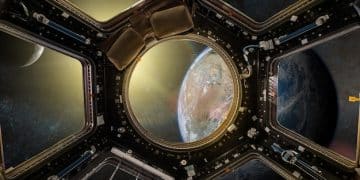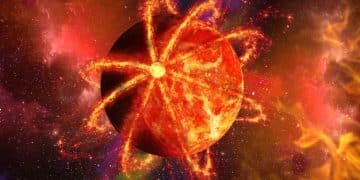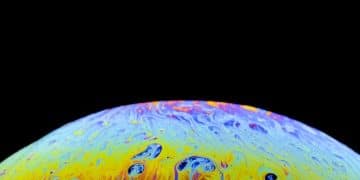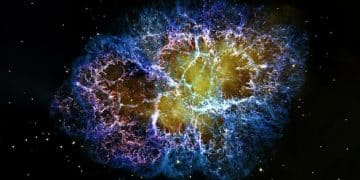Neutrino Astronomy: Unveiling Cosmic Secrets with Ghostly Particles
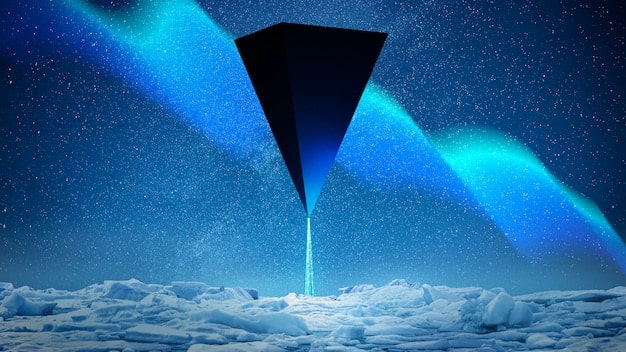
Neutrino astronomy uses neutrinos, nearly massless particles, to study cosmic events by providing unique insights into the universe’s most energetic phenomena, such as supernovas and black holes, complementing traditional light-based observations.
Have you ever wondered how scientists explore the universe using particles that barely interact with matter? Neutrino astronomy offers a groundbreaking approach to studying cosmic events, providing unique insights into the most energetic phenomena in the cosmos.
What is Neutrino Astronomy?
Neutrino astronomy is a relatively new field that uses neutrinos to observe astronomical objects. Unlike photons (light) or cosmic rays, neutrinos are weakly interacting particles, allowing them to travel vast distances through space and matter without being significantly deflected or absorbed. This makes them ideal messengers from the cosmos, carrying information from regions that are opaque to light.
Neutrinos provide a unique perspective on cosmic events, often revealing information that cannot be obtained through traditional electromagnetic observations. By studying the energy, direction, and flavor (type) of detected neutrinos, scientists can learn about the processes occurring in extreme environments, such as the cores of collapsing stars or the vicinity of supermassive black holes.
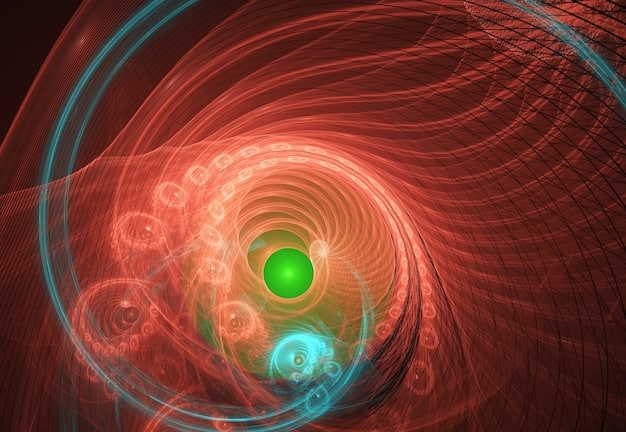
Why Neutrinos?
Neutrinos are elementary particles with no electric charge and very little mass, which allows them to penetrate through matter almost unimpeded. This is crucial for astronomy because many cosmic phenomena occur in dense environments where photons are easily scattered or absorbed.
- Unobstructed View: Neutrinos offer an unobstructed view of the universe, allowing us to see into regions that are opaque to light and other forms of electromagnetic radiation.
- Origin Tracking: The direction of arrival of a neutrino can be traced back to its source, providing valuable information about the location of cosmic events.
- Complementary Data: Neutrino observations complement those made with photons and cosmic rays, providing a more complete picture of astrophysical phenomena.
In summary, neutrino astronomy is a powerful tool for studying the universe, providing unique insights that are not available through other means. Its ability to see through matter and track the origin of cosmic events makes it an invaluable asset for understanding the most extreme environments in the cosmos.
The Properties of Neutrinos
Understanding the properties of neutrinos is essential for comprehending their role in astronomy. Neutrinos are fundamental particles, meaning they are not composed of smaller constituents. They are leptons, belonging to the same family as electrons and muons. Neutrinos come in three flavors: electron neutrinos, muon neutrinos, and tau neutrinos.
One of the most intriguing properties of neutrinos is their ability to oscillate between these flavors as they travel. This phenomenon, known as neutrino oscillation, has significant implications for our understanding of particle physics and the composition of the universe.
Neutrino Mass and Oscillation
Although neutrinos were initially believed to be massless, experiments have demonstrated that they do have mass, albeit very small. The discovery of neutrino oscillation provided the first direct evidence of this mass.
Neutrino oscillation occurs because the flavor eigenstates (electron, muon, and tau) are not the same as the mass eigenstates. As neutrinos propagate through space, they oscillate between the different flavor states, meaning that an electron neutrino can transform into a muon neutrino or a tau neutrino, and vice versa.
- Flavor Change: Neutrino oscillation implies that neutrinos change their flavor identities as they travel, which affects how they interact with matter.
- Mass Determination: The study of neutrino oscillation provides information about the mass differences between the neutrino mass eigenstates.
- Cosmological Implications: The mass of neutrinos has implications for the overall mass density of the universe and the formation of large-scale structures.
In conclusion, the properties of neutrinos, including their tiny mass and ability to oscillate between flavors, make them unique probes of the universe. These properties allow them to travel vast distances and provide information about the most extreme and distant cosmic events.
How are Neutrinos Detected?
Detecting neutrinos is a challenging task due to their weak interactions with matter. Neutrino detectors are typically large, massive instruments designed to maximize the probability of a neutrino interacting with the detector material. These detectors are often located deep underground to shield them from cosmic rays and other background radiation.
There are several types of neutrino detectors, each employing different techniques to detect neutrino interactions. Some of the most common types include water Cherenkov detectors, scintillator detectors, and liquid argon detectors.
Types of Neutrino Detectors
Water Cherenkov detectors, such as Super-Kamiokande and IceCube, use large volumes of purified water to detect Cherenkov radiation produced by charged particles created in neutrino interactions.
- Cherenkov Radiation: When a charged particle travels through water faster than the speed of light in that medium, it emits Cherenkov radiation, a cone of light similar to a sonic boom.
- Detector Design: These detectors are equipped with thousands of photomultiplier tubes (PMTs) to detect the faint Cherenkov light and reconstruct the direction and energy of the interacting neutrino.
- Examples: Notable water Cherenkov detectors include Super-Kamiokande in Japan and IceCube in Antarctica.
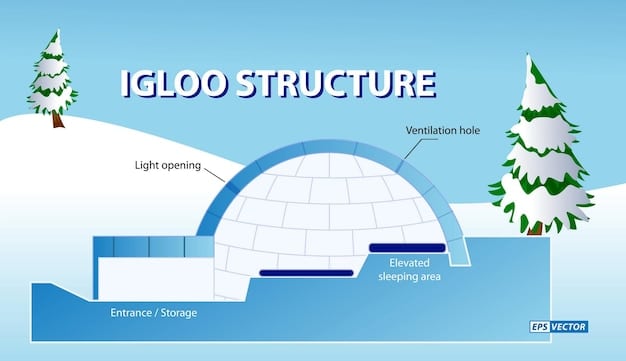
The challenge of detecting neutrinos lies in their incredibly weak interactions with matter, necessitating massive detectors and sophisticated background reduction techniques. Despite these challenges, advancements in detector technology continue to improve our ability to observe these elusive particles and unlock the mysteries they hold about the cosmos.
Major Neutrino Observatories
Several major neutrino observatories around the world are dedicated to detecting neutrinos from cosmic sources. These observatories employ different technologies and are located in diverse environments to maximize their sensitivity and coverage of the sky. Some of the most prominent neutrino observatories include IceCube, Super-Kamiokande, and ANTARES.
Each of these observatories contributes valuable data to the field of neutrino astronomy, helping scientists to unravel the mysteries of the universe’s most energetic phenomena.
Key Observatories and Their Contributions
IceCube Neutrino Observatory: Located at the South Pole, IceCube is the world’s largest neutrino detector, consisting of over 5,000 optical sensors buried in a cubic kilometer of ice. It detects neutrinos through the Cherenkov radiation produced by charged particles resulting from neutrino interactions in the ice.
Super-Kamiokande: This is a massive underground water Cherenkov detector in Japan, renowned for its contributions to neutrino oscillation studies and supernova neutrino detection.
ANTARES: The detector is located in the Mediterranean Sea, is designed to detect high-energy neutrinos from astrophysical sources in the Southern Hemisphere. It uses an array of photomultiplier tubes to detect Cherenkov light produced by neutrino interactions in the seawater.
These observatories, each with unique technologies and geographical locations, work together to provide a comprehensive view of the neutrino sky, contributing to our understanding of the universe’s most energetic phenomena.
Cosmic Events Studied with Neutrinos
Neutrino astronomy offers a unique window into some of the most extreme and energetic events in the universe. Neutrinos are produced in a variety of cosmic phenomena, including supernovas, active galactic nuclei (AGN), and gamma-ray bursts (GRBs). By studying the neutrinos emitted from these sources, scientists can gain insights into the underlying physical processes that drive these events.
Neutrino observations complement traditional electromagnetic observations, providing a more complete picture of these cosmic phenomena. In some cases, neutrinos may be the only direct messengers from regions that are opaque to light and other forms of electromagnetic radiation.
Examples of Cosmic Events and Neutrino Sources
Supernovas: Neutrinos are copiously produced in the core-collapse of massive stars, making them a key tool for understanding the physics of supernova explosions. Detecting neutrinos from a supernova can provide valuable information about the core collapse process, the formation of neutron stars or black holes, and the dynamics of the explosion.
Active Galactic Nuclei (AGN): These are supermassive black holes at the centers of galaxies, which accrete matter and emit enormous amounts of energy across the electromagnetic spectrum. Neutrinos can be produced in the jets of high-energy particles emanating from AGN, offering insights into the acceleration mechanisms and the composition of these jets.
Gamma-Ray Bursts (GRBs): The most luminous events in the universe, are associated with the collapse of massive stars or the merger of neutron stars. Neutrinos are expected to be produced in the relativistic jets that drive GRBs, providing information about the inner workings of these phenomena.
Neutrino astronomy plays a crucial role in unraveling the mysteries of cosmic events, providing a unique perspective that complements traditional electromagnetic observations.
Challenges and Future Directions
While neutrino astronomy holds immense promise, it also faces significant challenges. The low interaction rate of neutrinos requires extremely large detectors to collect a sufficient number of events. Additionally, distinguishing astrophysical neutrinos from background noise remains a major hurdle.
Despite these challenges, advancements in detector technology and data analysis techniques are continually improving our ability to detect and study astrophysical neutrinos. Future neutrino observatories, with larger volumes and improved sensitivity, are expected to provide even greater insights into the universe.
Future Prospects of Neutrino Astronomy
The development of new and innovative detector technologies is crucial for the future of neutrino astronomy. This includes exploring novel detection methods, such as acoustic and radio detection, as well as building larger and more sensitive detectors.
One of the most promising avenues for future research is the development of multi-messenger astronomy, which combines neutrino observations with those made using photons, cosmic rays, and gravitational waves. By integrating data from multiple messengers, scientists can obtain a more complete and detailed picture of cosmic events.
- Improved Detectors: Future neutrino observatories will be larger and more sensitive, allowing them to detect fainter and more distant sources.
- Multi-Messenger Astronomy: Combining neutrino observations with other forms of astronomical data will provide a more complete understanding of cosmic events.
- New Discoveries: With improved technology and a multi-messenger approach, neutrino astronomy is poised to make groundbreaking discoveries about the universe.
Neutrino astronomy is a rapidly evolving field with the potential to revolutionize our understanding of the universe. Overcoming current challenges and pursuing new directions will pave the way for groundbreaking discoveries in the years to come.
| Key Point | Brief Description |
|---|---|
| 🌌 Neutrino Astronomy | Using neutrinos to study cosmic events. |
| 🔬 Neutrino Properties | Weakly interacting, almost massless particles. |
| 🔭 Neutrino Detection | Requires large detectors like IceCube. |
| 💥 Cosmic Events | Supernovas, AGN, and GRBs as neutrino sources. |
Frequently Asked Questions
▼
Neutrino astronomy is unique because neutrinos can travel through matter almost unimpeded, providing a direct view of cosmic events that are otherwise obscured by dust and gas.
▼
Scientists detect neutrinos using massive detectors, often located deep underground or in ice, that capture the faint interactions between neutrinos and the detector material.
▼
The main challenges include the low interaction rate of neutrinos, requiring extremely large detectors, and the need to distinguish astrophysical neutrinos from background noise.
▼
Neutrinos allow the study of supernovas, active galactic nuclei (AGN), and gamma-ray bursts (GRBs), providing insights into the underlying physical processes of these events.
▼
The future involves developing larger and more sensitive detectors, advancing multi-messenger astronomy, and exploring novel detection methods to make groundbreaking discoveries about the universe.
Conclusion
In conclusion, neutrino astronomy opens a new window into the universe, offering unique perspectives on cosmic events through the study of these elusive particles. While the field faces challenges, ongoing advancements in detector technology and data analysis promise to unlock new insights into the workings of the cosmos.
